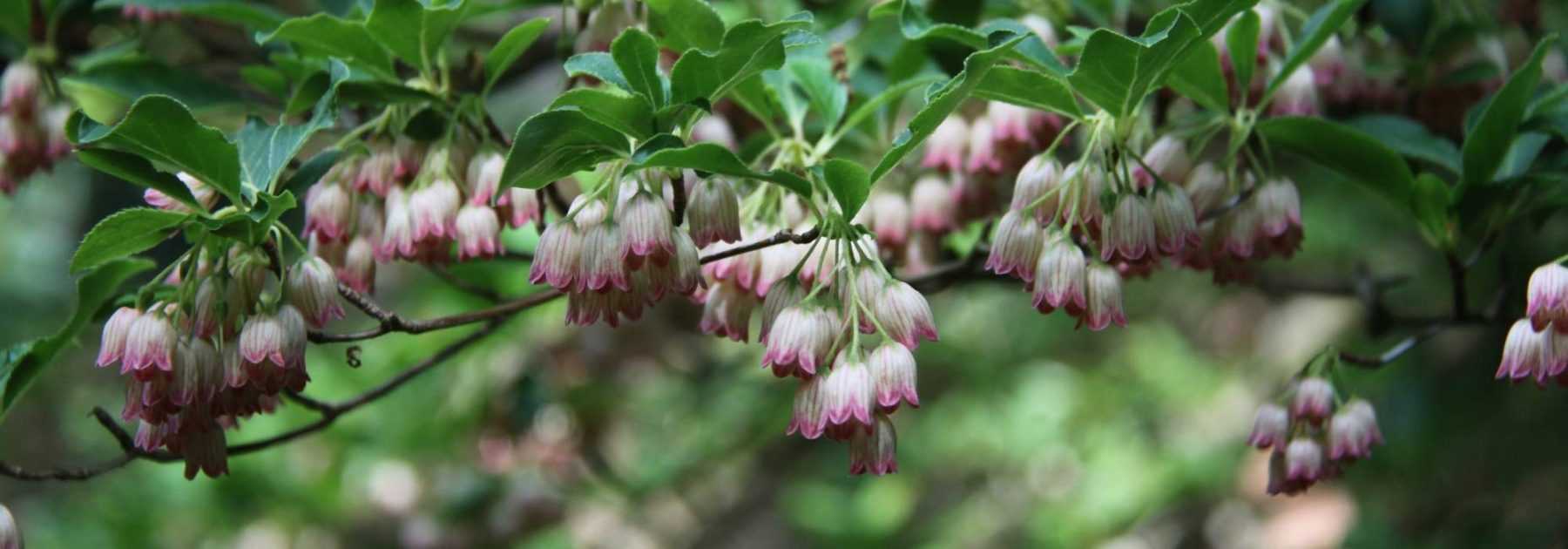
Enkianthus, Bell-flowered Andromeda: Planting, Growing, and Care
Contents
The Enkianthus in a few words
- Still too little known, you will appreciate the Enkianthus perulatus and Enkianthus campanulatus for their spring flowering in pendulous clusters and their stunning autumn foliage
- From April to June, these deciduous bushes are adorned with a multitude of small, fragrant white or pink bells of incredible delicacy
- They thrive in partial shade in heather soil
- With very slow growth, they nevertheless withstand extreme cold very well
- They can be used in beds, as standalone specimens or even in pots
Our expert's advice
Still too rarely seen in our gardens, the Enkianthus is a heather soil bush that offers sumptuous colourful foliage in autumn and a spring flowering of infinite delicacy.
In our gardens, Enkianthus campanulatus or “campanulate andromeda” and Enkianthus campanulatus var. palibinii will slowly grow up to 3 to 5 m, however some dwarf cultivars like Enkianthus campanulatus ‘Hollandia’ do not exceed 1.20 m in height, and are perfectly suited to small gardens. On the other hand, Enkianthus perulatus (syn. Enkianthus japonicus) has a more compact form and a beautiful, neat silhouette. Enkianthus quinqueflorus is a little-known species rarely cultivated in our gardens.
From April to May, the Enkianthus is covered with a multitude of fragrant bell-shaped flowers that bloom into flesh-pink corollas, raspberry-red (Enkianthus campanulatus ‘Red Bells’), cream streaked with red (Enkianthus campanulatus ‘Venus’), or white margined with pink (Enkianthus campanulatus ‘Pagode’).
Unique, these clusters of luminous flowers brighten up shady corners in spring, while in autumn the bush dons a superb flamboyant foliage, its leaves turning gold and scarlet red.
This acidophilous bush requires fresh heather soil where it grows very slowly in the shade of trees and sheltered from cold winds.
Pruning Enkianthus campanulatus is not obligatory, but you can do it to control its growth.
With its slow development and elegant yet compact habit, the Enkianthus adapts to all uses; in beds with heather soil plants like Rhododendrons and pieris, as a standalone feature, and even in pots on a shaded terrace.
Hardy and easy to grow, the Enkianthus is among the most beautiful heather soil bushes. Let yourself be seduced by its unique flowering and autumn attire!
Description and botany
Botanical data
- Latin name Enkianthus
- Family Ericaceae
- Common name Enkianthus, Bell-flowered Andromeda
- Flowering April to June
- Height 0.60 to 5 m
- Exposure sun, partial shade
- Soil type acidic, heather
- Hardiness -15-20°C
Native to the woodlands and thickets of Japan and southern China, including Taiwan, Enkianthus is a deciduous shrub belonging to the Ericaceae family, like heathers, rhododendrons and Andromeda plants to which it is closely related. The Enkianthus genus includes about ten species of shrubs or small trees, among which Enkianthus campanulatus, also called “Bell-flowered Andromeda”, is the most widely cultivated and of which different forms exist such as Enkianthus campanulatus var. palibinii and various cultivars like ‘Red Bells’. Enkianthus perulatus (probable synonym of E. Japonicus) or “white enkianthus“, a smaller species with a more compact habit, is also frequently found in cultivation.
Enkianthus quinqueflorus, a species with large leaves and flowers, Enkianthus chinensis and Enkianthus cernus are rarely present in our gardens.
With slow growth, this shrub grows gradually to form, depending on the species, a small tree with an upright habit, rather narrow, sometimes spreading or rounded, bushy and well-branched from the base. In the bell-flowered enkianthus, the shoots grow in whorls, giving the shrub a well-balanced, harmoniously tiered branch structure. The tallest Enkianthus will reach on average after many years, from 2 up to 4-5 m in all directions. There are dwarf varieties not exceeding 60 cm to 1.20 m in height, modest dimensions that allow for container cultivation and pruning into bonsai or cloud forms.
It will take many years to see it form a true small tree: patience rewarded by a long lifespan in the garden and a delicate, original spring flowering.
From April to June, sometimes before leafing, the Enkianthus is covered with a multitude of bell-shaped or urn-shaped flowers, borne in umbels or fine hanging clusters at the tips of the shoots. The flowers, 0.5 to 2 cm wide and formed of 5 fused petals, sway gracefully at the end of long, sometimes slightly raspberry-pink pubescent pedicels.
Gathered in corymbs of 5 to 20 under the fan of leaves, they offer a slightly waxy texture. Infinitely delicate, these swollen corollas set with an acid green or pinkish green calyx, come in all shades from creamy white to pink, and even a red sometimes so bright they resemble clusters of redcurrants. Solid-coloured, they are also subtly veined with carmine or white streaks depending on the variety, offering soft colour harmonies.
Slightly fragrant, this exquisite melliferous and nectariferous bell-shaped flowering resembles that of Pieris japonica and lasts a good month.
After flowering, brown ovoid winged capsule-shaped fruits appear and persist through winter.
The dense, deciduous foliage is composed of leaves arranged alternately in clusters at the tips of sometimes reddish shoots, 2 to 7 cm long and 2 cm wide, lanceolate, elliptical to ovate, very finely toothed and veined. They are matte, glossy or sometimes downy on the upper surface or underside and form denser groups of leaves at the branch tips.
This pretty foliage of bright green or bluish green in spring dons a magnificent autumn attire. It then takes on beautiful autumn hues ranging from gold to yellow-orange to scarlet red before falling.
Enkianthus is perfectly hardy and withstands temperatures down to -15°C, even lower, provided it is planted in a sheltered position. It can therefore be grown almost anywhere in France. Native to damp woodlands, it prefers partially shaded spots in the garden and requires only an acidic, lime-free soil as it is a heather soil plant.
It can be used equally well in beds with other heather soil shrubs, in woodland settings, as well as in large containers on a terrace.
Main species and varieties
The campanulate Andromeda is the tallest and most widespread species in our gardens. It has notably given rise to remarkable cultivars with subtly bicoloured flowers and a hybrid form, the Enkianthus campanulatus var. palibinii.
Our Favourites
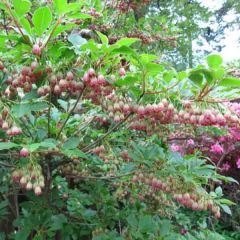
Enkianthus campanulatus
- Flowering time June, July
- Height at maturity 1,50 m

Enkianthus campanulatus Red Bells
- Flowering time June, July
- Height at maturity 2,50 m
Discover other Enkianthus
View all →Available in 1 sizes
Available in 1 sizes
Available in 2 sizes
Available in 1 sizes
Available in 1 sizes
Planting
Where to plant Enkianthus?
Very hardy, the Enkianthus is not afraid of cold and can withstand temperatures as low as -15°C to -20°C, sometimes even lower, without failing. However, planting it sheltered from cold and drying winds is advisable; young shoots may be sensitive to late frosts.
This bush prefers semi-shaded positions, sheltered from direct sunlight, under the dappled shade of tall trees. However, avoid overly dense shade, it needs light to flower well and display beautiful autumn colours. It will be more challenging to establish south of the Loire, as it dislikes scorching sun and drought. It may tolerate a sunny position for a few hours in the morning or late afternoon, but only if the soil remains cool.
Easy to grow, it only needs coolness and acidity to thrive.
This is an acidophilous bush that dislikes limestone above all and requires acidic soil, ideally close to heather soil: plant it in well-drained, light, humus-bearing, non-calcareous soil that remains cool.
Slow-growing, this is a compact bush, ideal as a standalone feature for small, well-tended gardens and urban gardens. Very versatile, Enkianthus can also be used in shrub borders with other heather soil-loving bushes, alongside spring-flowering perennials, in woodland edge groves surrounded by spring bulbs, or in pots on a shaded terrace.
Plant taller varieties in a sheltered wooded area to fill out a hedge, while dwarf varieties (Enkianthus perulatus ‘Compacta’, Enkianthus campanulatus ‘Hollandia’) in cool, zen rockeries or pots, bonsai-style.
When to plant Enkianthus?
Plant Enkianthus ideally in autumn from September to November or in spring, from March to May, outside frost periods.
How to plant Enkianthus?
In open ground
Like all heather soil-loving bushes, the Enkianthus dislikes calcareous soil in which it would not survive. In all cases, it’s preferable to add some heather soil when planting (the pH should be below 6.5).
If your soil is too calcareous, replace the excavated soil with a mix of heather soil and leaf mould, preferably plant it in a pot or simply accept its acidophilous nature. Opt for a bush less intolerant to limestone unless you’re prepared to make regular additions of heather soil in varying quantities. Avoid areas where water stagnates in winter: plant on a mound if necessary.
- Dig a planting hole, about two to five times wider than the root ball
- Add gravel, pozzolan or a good layer of clay pebbles at the bottom of the hole to ensure good drainage
- Place your Enkianthus at collar level, in a mixture of garden soil, turf, heather soil and leaf mould
- Backfill and firm down
- Water thoroughly
- Spread a good layer of bark or pine needle mulch at the base of the bush
- Water regularly during the first year with rainwater
Planting a heather soil-loving bush is easy with our advice!
Container cultivation
You can also grow Enkianthus in pots, its slow growth makes this type of cultivation possible. We recommend opting for dwarf varieties. Choose a sufficiently large and deep container (30 to 40 cm in diameter), then plant your bush in a well-draining mix of garden soil, turf, and 50% genuine heather soil. Careful monitoring of watering will be essential. Mulch the base or plant small perennials like miniature cyclamen, brunnera, dodecatheon or hardy geraniums to retain moisture.
Maintenance, pruning and care
Once well established in a non-calcareous soil that suits its nature, the Enkianthus will require little attention apart from regular watering, especially during the first two summers after planting. It must never lack water, it needs moist and cool soil in summer but dislikes waterlogging in winter. Water with non-calcareous water, preferably rainwater. Enkianthus grown in containers require more frequent watering.
In spring, spread a layer of organic mulch (pine bark or needles, a carpet of dead leaves, or fern fronds), renewed annually, to keep its roots cool during summer heat and reduce watering needs.
Optionally, each spring, top-dress the base with well-rotted compost and heather soil.
Remove faded flowers after flowering to prevent seed formation, which exhausts the plant.
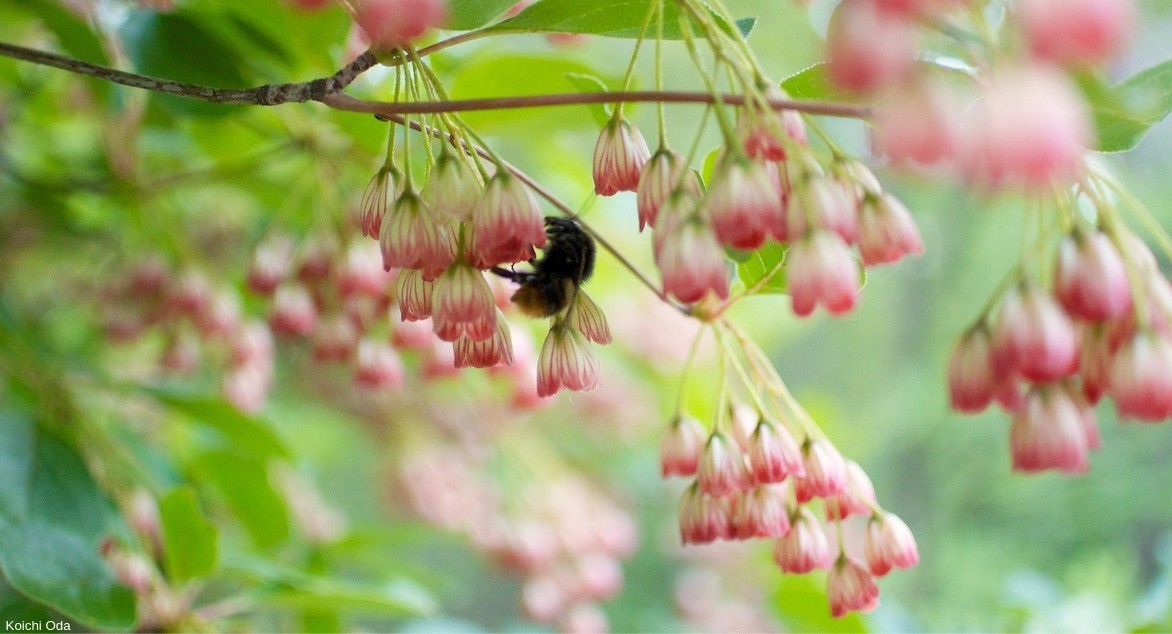
Growing slowly, pruning is unnecessary but can help, on taller varieties, to balance their shape and control their height. Prune after flowering. Only intervene to remove any dead or poorly placed branches.
The smallest varieties like cultivars of Enkianthus perulatus can be shaped as desired and trained as small trees, bonsai, or even cloud-pruned. Discover more tips in our guide on “pruning spring-flowering shrubs properly”.
Grown in good conditions, Enkianthus has no known pests. If your soil is calcareous, however, it may develop chlorosis, characterised by yellowing foliage: consider adding heather soil before planting and only water with rainwater.
Propagation
The propagation of Enkianthus can be done by sowing in spring, although this technique is quite delicate. Layering is also possible in late summer to propagate Enkianthus, but you’ll need to be patient as root development is very slow. That’s why we recommend propagation by cuttings in summer (August-September), once flowering has finished, on semi-woody stems.
By semi-ripe cuttings
- Take 10-20 cm stems with a heel
- Make a clean cut just below a leaf
- Remove the leaves from the lower part of the cuttings
- Keep those on the upper part
- Plant them in a light, well-draining substrate of compost and sand
- Firm down
- Water the cuttings regularly with a sprayer
- Transplant them into buckets as soon as they’ve formed roots
- Overwinter them frost-free at 20°C in a bright spot but out of direct sunlight
- Plant out in the ground or in pots the following spring
To learn more, read our tutorial: How to propagate Japanese Andromeda?
Pair with
Enkianthus offers two beautiful seasons: spring when it’s covered in delicate pastel-hued campanulate flowers and autumn when its foliage turns golden, orange or deep red, allowing for wonderful combinations in partially shaded areas of the garden.
Its flowering is inspiring in a romantic garden, pink or white, bringing freshness and delicacy. Trained in cloud-like bonsai style, this bush will perfectly complement a zen garden alongside Japanese azaleas, ornamental grasses and phormiums.
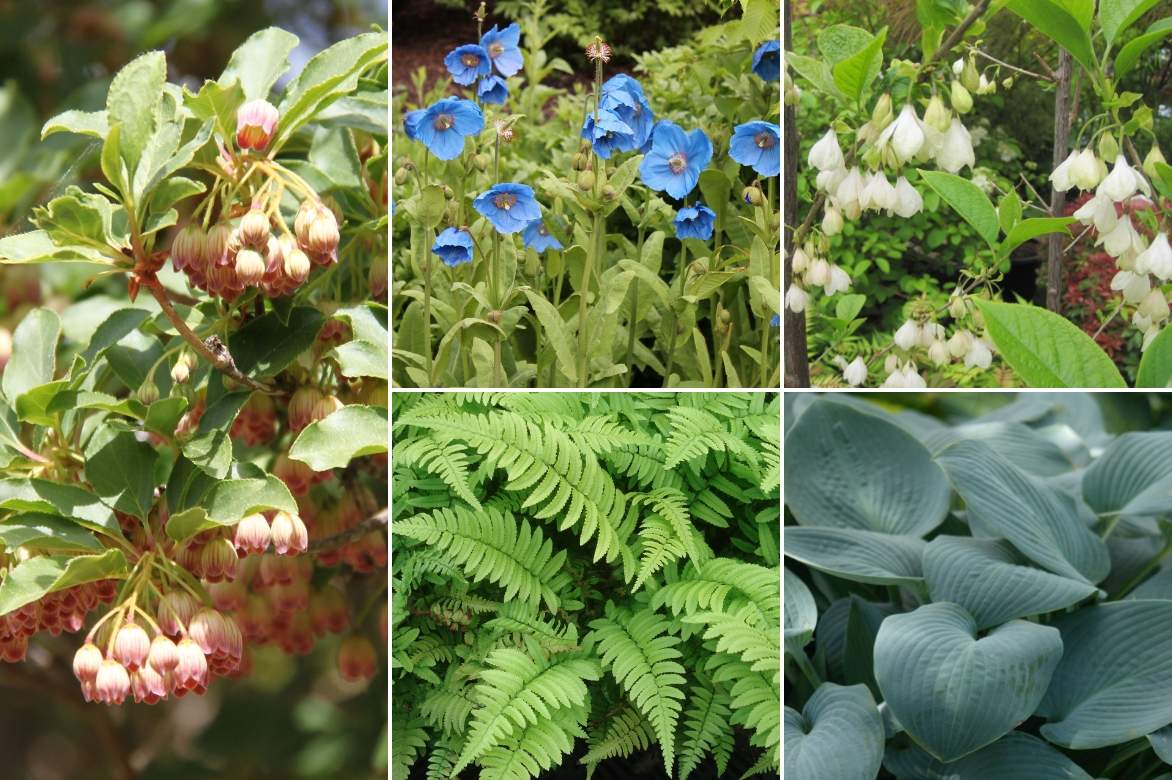

A planting idea for acidic soil in shaded areas: Enkianthus campanulatus, Meconopsis betonicifolia, Dryopteris cycadina (syn. atrata) and Hosta ‘Halcyon’ beneath a Halesia carolina
It naturally finds its place in large borders surrounded by other heather soil bushes, and will look magnificent alongside Pieris, Rhododendrons, Camellias, Kalmias, azaleas and related plants like Leucothoe, hydrangeas or skimmias.
It pairs easily with shade-loving perennials such as ferns, brunnera, heucheras, Epimedium, pachysandra or hostas.
In spring, create fresh romantic scenes by surrounding its base with spring-flowering bulbs like Cyclamen coum, lilies, pink tulips and white daffodils.
Useful resources
- What to plant in a wooded garden? Here are our ideas to make the most of shade in the garden
- They set autumn ablaze with their fiery foliage: discover our unique collection of bushes with coloured autumn foliage
Frequently asked questions
-
After two years in the ground, my Enkianthus isn't shooting!
It's perfectly normal, this bush is very slow to establish itself: its root system develops very gradually in the soil. You'll need to wait many years before it forms a proper small tree. Its slow growth is only matched by its impressive longevity!
-
The leaves of my Enkianthus are turning yellow. Why?
Intolerant of lime, its leaves discolour and turn yellow in case of excess lime which causes chlorosis. It must absolutely be planted in non-lime heather soil. The culprit may also simply be the watering water. Water only with rainwater.
- Subscribe!
- Contents
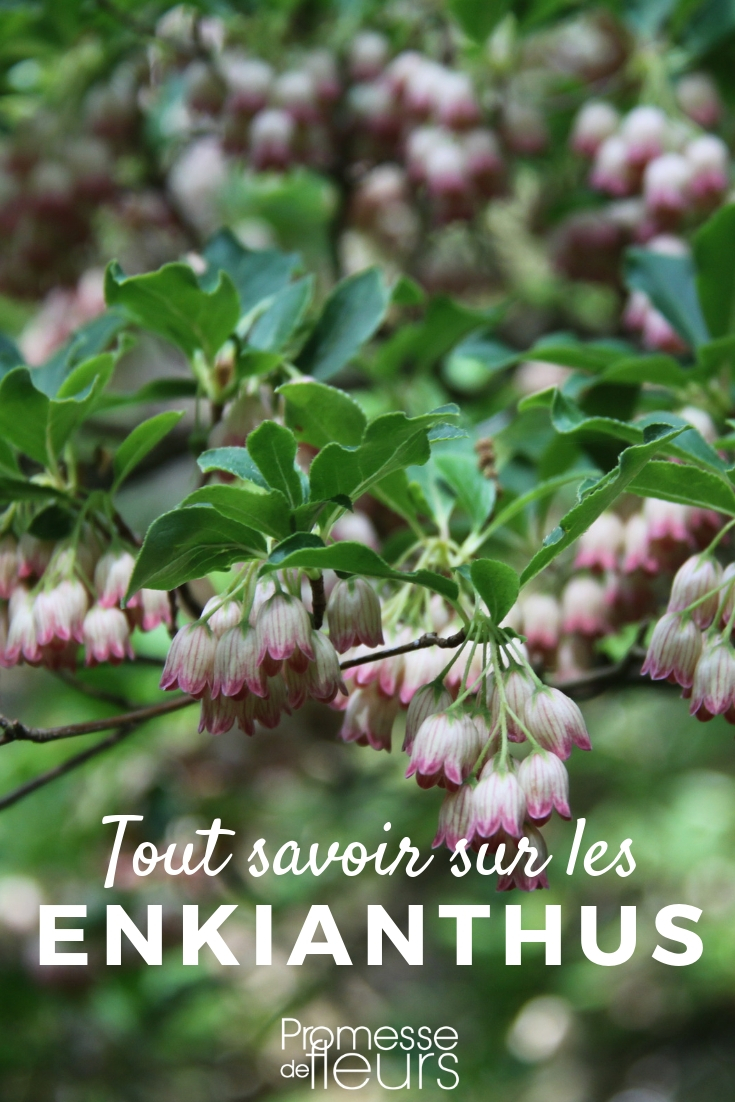


































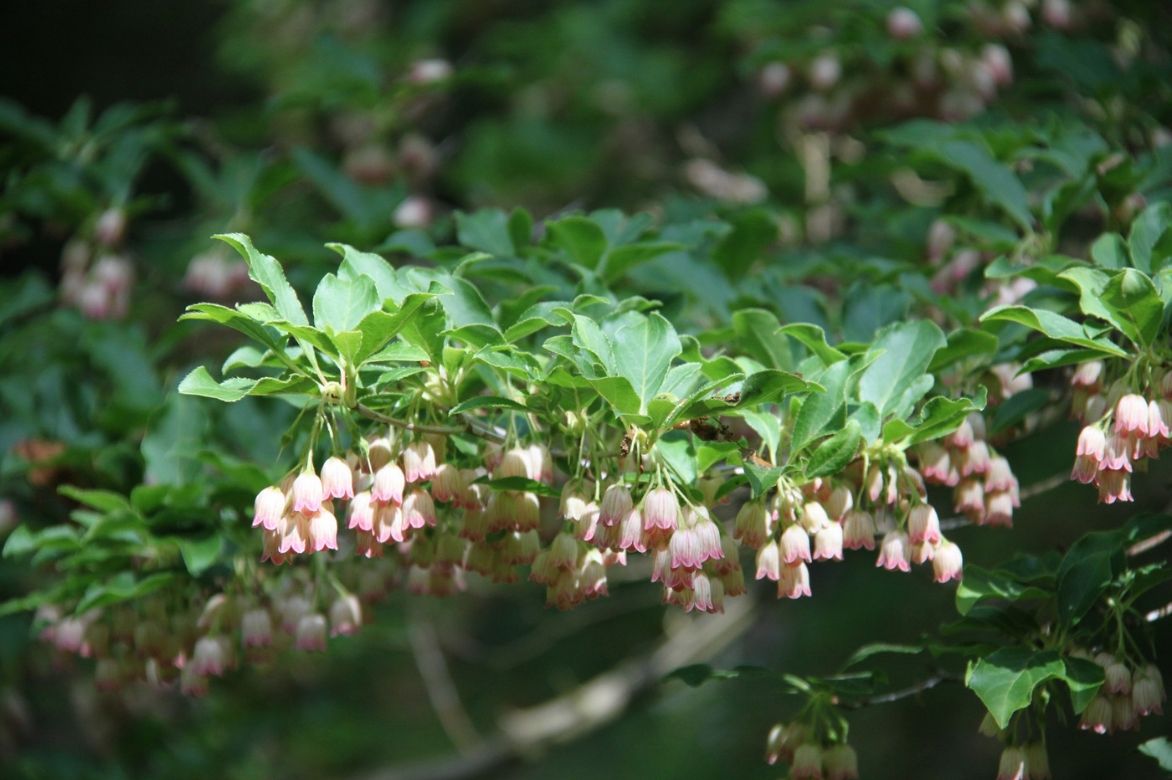
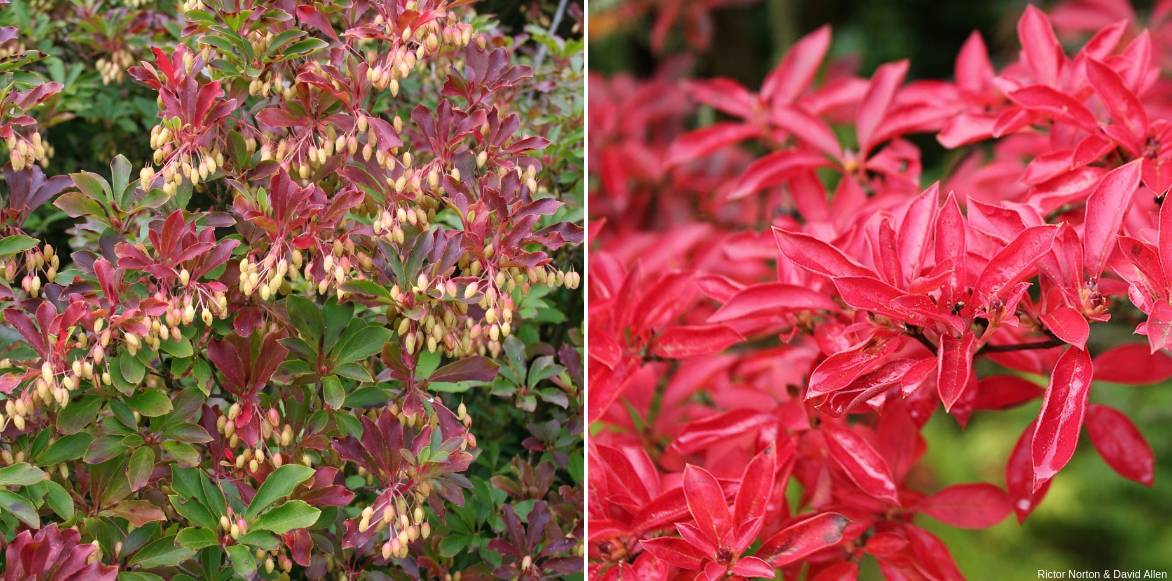
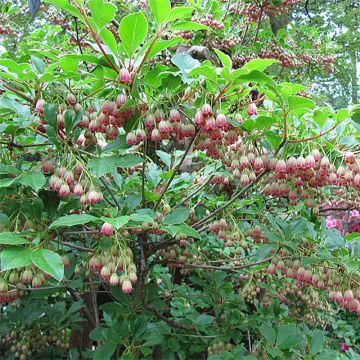
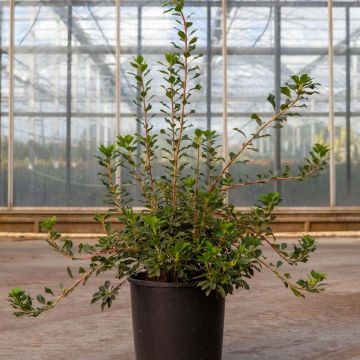

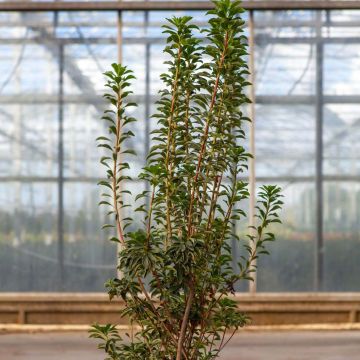
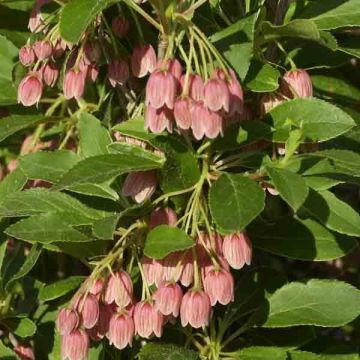
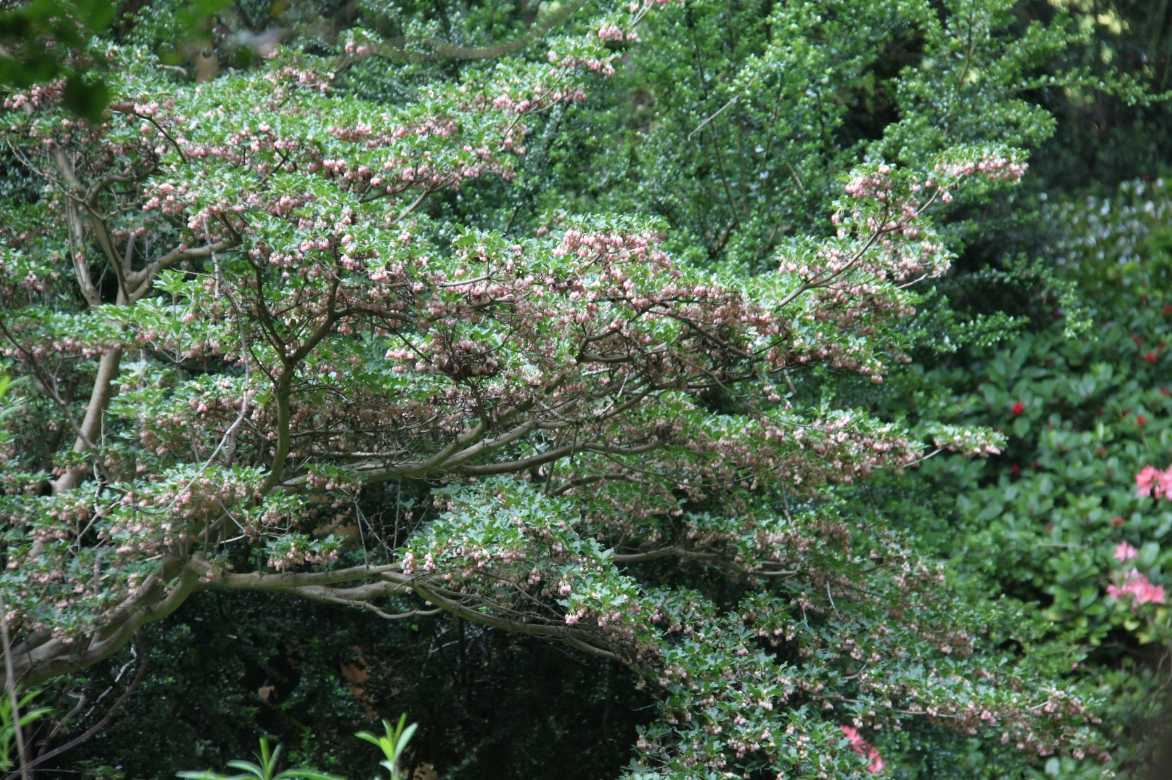
Comments